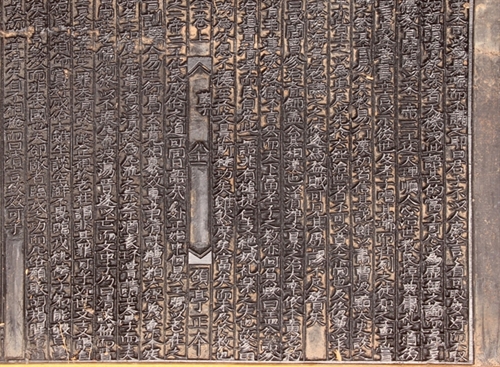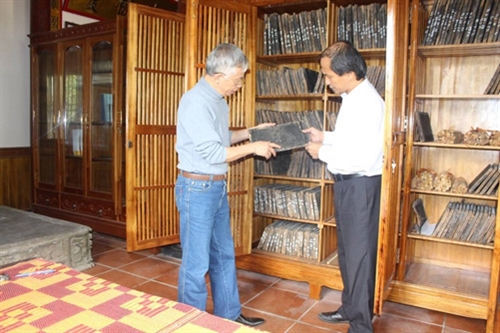 Life & Style
Life & Style

The Hà Tĩnh province has planned different solutions to preserve and promote the Phúc Giang School Woodblocks, following their recognition in May as UNESCO world heritage at the 7th Memory of the World Committee for Asia and Pacific summit.
 |
| Ancient script: An image of the Phúc Giang School’s woodblocks. |
HÀ TĨNH — Hà Tĩnh Province has planned different solutions to preserve and promote the Phúc Giang School’s woodblocks, following their recognition in May as UNESCO World Heritage at the seventh Memory of the World Committee for Asia and Pacific summit.
The Phúc Giang School’s woodblocks were created by scholars of the Nguyễn Huy family in Hà Tĩnh Province in the 18th century. The blocks were used to print text books for the Phúc Giang School, which was located in the old Trường Lưu Village, Can Lộc District of Hà Tĩnh.
The director of Hà Tĩnh Museum, Nguyễn Trí Sơn, said it would cooperate with the National Library of Việt Nam and the Institute of Literature to organise exhibitions of the woodblocks, translate them into Vietnamese and print them into books.
The People’s Committee of Can Lộc District also plan to make Trường Lưu a tourist cultural village, helping tourists to find out more about the village’s rich history and culture.
The Phúc Giang School’s woodblocks comprise of 379 well-preserved blocks to print textbooks, said Sơn. The total set used to number 2,000 blocks, but many have been damaged or destroyed over time. The blocks are rare, unique and contain valuable content. The two-century-year-old set of woodblocks form the heritage of the Nguyễn Huy family, that has been preserved by the family’s descendants, he noted. They are the only ancient woodblocks created by a family for education preserved today in Việt Nam.
In 1732, well-known scholar Nguyễn Huy Oánh, built a local school in Trường Lưu village to teach students. He also founded Phúc Giang library with thousands of books that he and his family collected over many years.
Thanks to Oánh’s deep knowledge, his teaching methods and the rich library, the school attracted a great number of students from different regions.
The contents of the woodblocks were composed by five cultural scholars of the Nguyễn Huy family, who were teachers at the Quốc Tử Giám University, the country’s first university.
 |
| National heritage: Professor Nguyễn Huy Mỹ (descendant of the Nguyễn Huy family) and Hà Tĩnh Province museum’s director Nguyễn Trí Sơn (right) arrange the Phúc Giang School’s woodblocks. — Photos www.baotintuc.vn |
Nguyễn Huy Mỹ, from the 16th generation of the Nguyễn Huy family, said the woodblocks were carved using traditional techniques, and with words written in Chinese and Nôm (a classical vernacular script of the Vietnamese language).
They reflect various values of the country concerning culture, education, economy, society and interference among different families.
Each woodblock, which is 20cm wide, 2cm thick and 30cm long is made of precious thị tree wood.
Sơn said, the Phúc Giang School’s woodblocks appeared before the woodblocks of the Nguyễn Dynasty and those of Vĩnh Nghiêm Pagoda in Bắc Giang Province. What make the Phúc Giang woodblocks special is that they belong to a family and they are still well preserved. The museum and the family Nguyễn Huy have thought of solutions and materials to preserve the woodblocks.
Memory of the World Programme (MOW) was established by UNESCO in 1992 to raise awareness of the need to preserve documentary heritage in various parts of the world.
The other five Vietnamese items recognised in the Memory of the World Regional Register for Asia and Pacific list are Royal Literature on Huế Royal Architecture, the Nguyễn Dynasty’s wooden blocks and the royal records, the Văn Miếu stone stele and the Vĩnh Nghiêm Pagoda woodblocks. — VNS